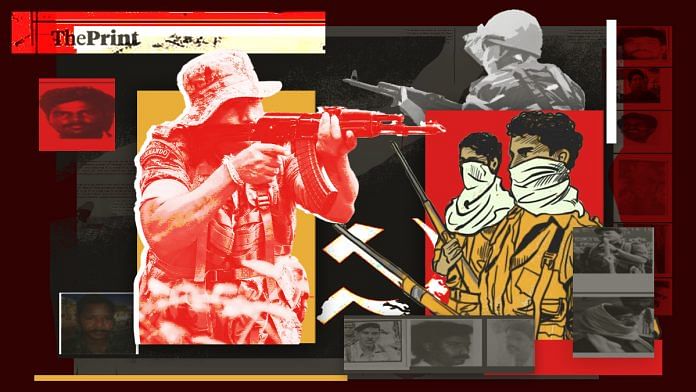Some 15 years ago, Naxals sloganeered about establishing a —stretching from Pashupati in Nepal, to Tirupati in Andhra Pradesh. In 2013, around 126 districts across different states were reporting LWE-related violence; by March 2025, this figure had fallen to just 18 districts, with only six classified as ‘most affected’.
Driven by strong political will, the government has shown it will not relent in the face of propaganda from human rights activists sympathetic to hardcore Maoists who believe in seizing power through the barrel of a gun and reject the democratic path. The government’s multi-pronged strategy, sustained over more than a decade, has proven highly effective. Success on the ground has been achieved by relentlessly pursuing the —a comprehensive approach adopted by the Ministry of Home Affairs in 2017, combining security measures with developmental initiatives, and tracking progress through key performance indicators.
During my deputation with the Central Reserve Police Force (CRPF) in 2010, I had the opportunity to witness firsthand the complexities of India’s prolonged conflict with Left-Wing Extremists under Operation Green Hunt.
The audacity of the problem can be gauged from one devastating ambush of a CRPF patrol party by Naxals in Dantewada district, in which 76 security personnel were killed in a single incident. The incident showed the extent of their strategic planning, coordination, and range of armaments. These types of attacks pushed the central forces into a defensive mindset. In Bijapur and Dantewada, the situation on the ground was so grim that road-opening parties (ROP) were deployed to minimise the risk of ambush or gunfire. The terrain was littered with mines, and the constant threat of IEDs and sudden-burst fire were regular occurrences during troop movements.
As a result, the forces became highly defensive and remained confined to their camps instead of carrying out anti-Naxal operations. This not only lowered the morale of the troops but also shook the tribal population’s trust in them. This also led to a complete drying up of intelligence regarding Naxal movements. Tribals were forced to choose between the Naxals and the security forces, as the state failed to offer them protection or viable alternatives. The Naxals were able to convince the tribals that they were fighting for their cause of and .
The overall outcome was that in areas like Dantewada and Bijapur, the writ of the Naxals ran large. They even prevented government teams from carrying out developmental work, such as building roads, expanding telecommunication networks and electricity lines in the interior regions, in order to maintain their control over these so-called “liberated zones.”
The overall success in dismantling Naxalism can be attributed to both developmental and security strategies. Targeted government initiatives on the developmental front have been instrumental in restoring the faith of the people in the state. Road connectivity and telecommunication networks have improved tremendously in the last decade, civic action programmes carried out by CAPFs have helped in winning the hearts and minds of the locals, and the Roshni scheme has enabled tribal youth to develop skills and gain employment.
Apart from the developmental initiatives mentioned above, the government has acted in a highly planned, coordinated, and resolute manner on the security front as well. What has really made a big difference is:
With the operational tide turning in favour of security forces, the next phase of counterinsurgency must focus on sustainable peace through inclusion.
Winning battles on the ground is only half the victory. Rehabilitating and reintegrating Naxals into mainstream society is crucial for lasting peace. They should be encouraged to surrender and adopt democratic means to voice their grievances. The ballot, not the bullet, must drive change.
Though much has been achieved, and the Home Minister’s deadline of ending Naxalism by 31 March 2026 is within sight, we cannot afford to be complacent.
We have to continue the pressure on the hardcore arms-wielding Naxalites relentlessly. We also have to keep dismantling their financial network, as Naxals get funding from extortion and protection rackets.
The problem of Naxalism is not merely a security one but is also related to development and governance. Even as security forces dismantle the operational infrastructure of the insurgents, the risk of regrouping will remain unless structural issues are addressed.
The regions most affected by Left-Wing Extremism have historically suffered from a grave development deficit. To ensure that the Leftist ideology does not find fertile ground again, the next phase must focus more on people-oriented governance, land rights, health care, education, and economic upliftment. A dual-track approach is essential: sustained security operations must be matched by a robust development strategy that addresses the root causes of extremism.
The last and most important element is an effective ideological counter-narrative. The fight is not just against armed insurgents but against an ideology. The likes of Basavaraju can be eliminated, but not an ideology. To ensure that there is no possibility of regrouping, we must remain on our toes—vigilant, adaptive, and proactive. We need to counter Naxalite propaganda effectively on a regular basis.
The battle for hearts and minds has to be finally won not just by the gun, but by plugging the gaps in development and governance, by continually working in a sustained manner for the most marginalised sections.








